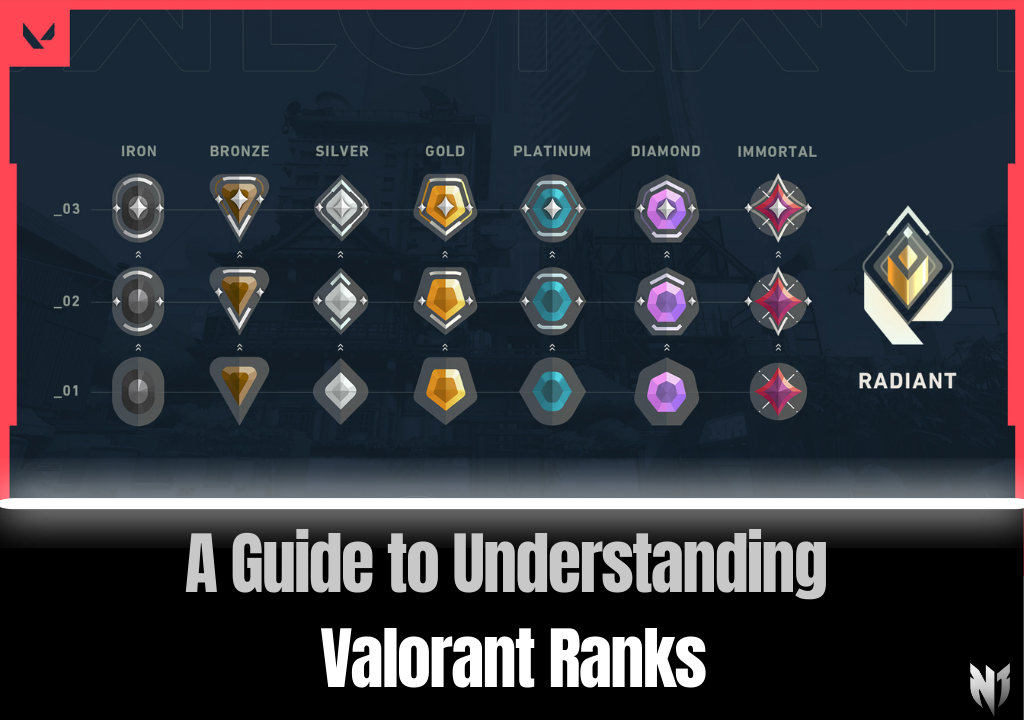

Check out our Valorant rank boosting services to climb faster while learning all about ranks and matchmaking!
Curious about how Valorant’s ranking system works? Want to know more about MMR, Acts, and matchmaking? Below, we’ll break down every detail of Valorant’s competitive landscape, from the initial placement matches to the intricacies of five-stacking.
Valorant’s rank system has 8 main tiers (with the top rank being Radiant), and each tier (except Radiant) is divided into 3 sub-ranks (or “divisions”). Here’s the tier list in ascending order:
Before receiving your initial rank, you must play 5 placement matches. Your individual performance, along with wins or losses, influences your starting rank. After that, subsequent rank adjustments depend on your match outcomes and how well you perform relative to your opponents.
Valorant organizes its competitive play into **Acts** and **Episodes**:
Although your **MMR** (Matchmaking Rating) remains mostly intact through these resets, consistent performance will help keep you near or above your previous rank when the new Act begins.
**MMR** is Valorant’s hidden numerical value that reflects your skill level behind the scenes. Although you don’t see it directly, it significantly affects how many Rank Rating (RR) points you gain or lose:
While your **rank** indicates your overall match success, MMR zeroes in on your individual performance. Understanding that difference can explain why you may sometimes earn or lose more RR than expected.
Valorant rewards players for their competitive efforts each Act with unique cosmetics:
Ranked mode unlocks at **account level 20**. Prior to that, play Unrated matches to level up, gain map awareness, and hone your aim.
Your duo partner must be within 3 tiers of your own rank. Here’s a simplified breakdown:
Yes, four-stacks are no longer allowed in Valorant’s ranked mode. This change aims to reduce toxicity toward solo queue players and preserve balanced matchmaking.
If your five-stack has a rank difference greater than three divisions:
Valorant’s ranking system hinges on balancing individual performance, team success, and a hidden MMR value. Understanding your rank, MMR, and the rules around duo or five-stacks can help you maximize your climb each Act. Stay adaptable, keep an eye on the seasonal resets, and prepare to earn those coveted ranked rewards!
Looking to boost your rank or learn new strategies? Check out our Valorant accounts and Valorant rank boosting services to step up your competitive game!
Professional boosting with No Cheats, 100% Refund Guarantee, and Trusted Boosters.